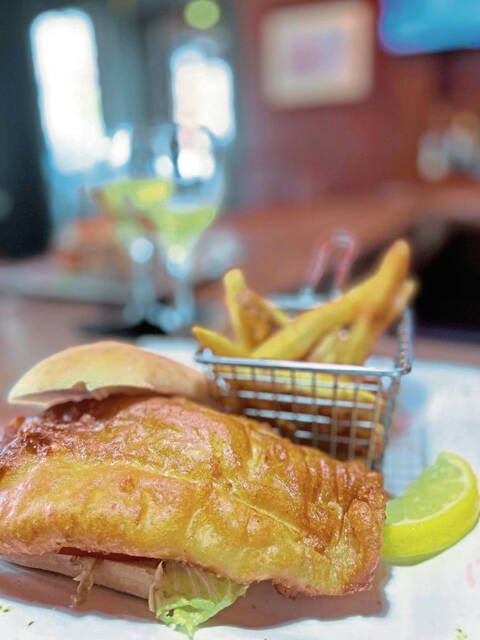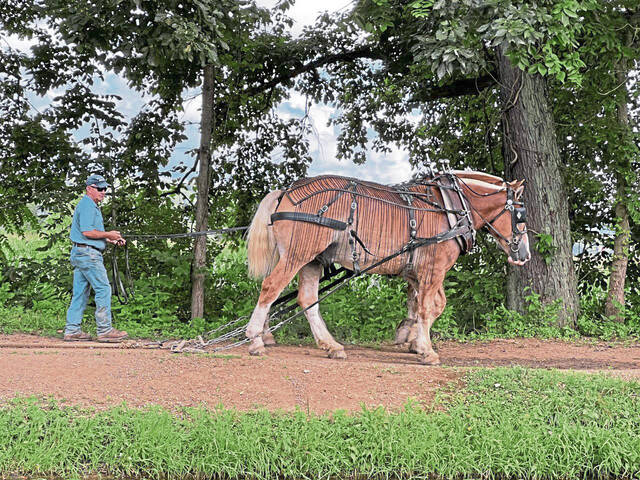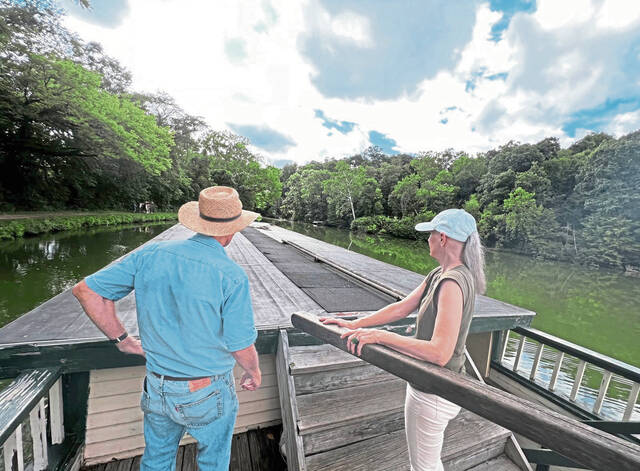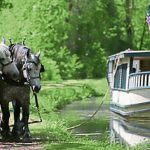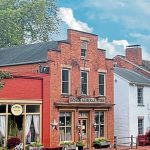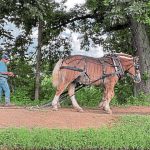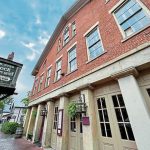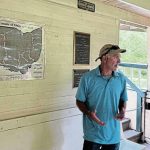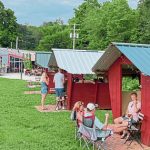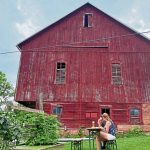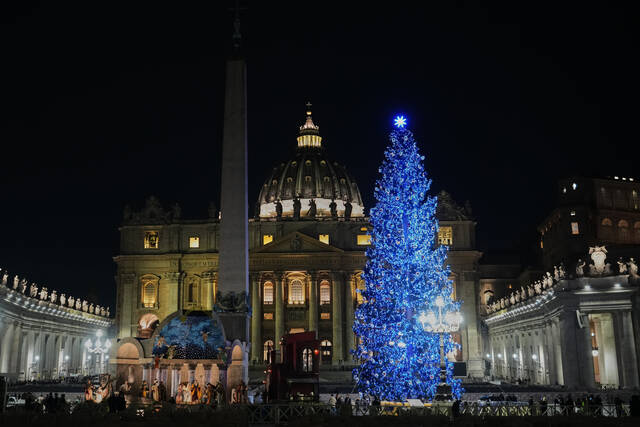Coshocton, Ohio, is less than a two-and-a-half-hour drive from Pittsburgh, located between Columbus and Canton in the Ohio Valley foothills.
And it’s the perfect place to take a “daycation.”
Explore lush gardens and tour historic Civil War-era architecture in the once-booming port along the Ohio and Erie Canal. The first canal boat, the Monticello, arrived in the region in 1830, part of a 350-mile canal that traversed from Lake Erie to the Ohio River.
Quaint shops, artisan demonstrations, an original one-room schoolhouse, a blacksmith shop and more await visitors looking to travel back in time and learn more about America’s canal transportation at the turn of the century into the 1900s.
Coshocton Mayor Mark Mills said he’s proud of the region that once served as the capital of the Delaware Nation and holds its place as an important historic stop on the Ohio and Erie Canal.
“Tourism is almost a $60 million-a-year business here,” Mills said. “With nearly 40,000 acres of public land, three rivers and a historic restored canal town and 10 wineries, a brewery — we couple outdoor recreation with history and lots of beverages.”
The three rivers Mills references are the Walhonding River and Tuscarawas River, which meet to form the Muskingum River within the city of Coshocton.
Ready to explore? Here are some must-see things to do and visit.
Historic Roscoe Village
Karen Jack of Pittsburgh’s Avalon neighborhood took a road trip to Coshocton last month, staying overnight in Historic Roscoe Village.
A restored Ohio and Erie Canal town laid out in 1816, the area is nestled near the Muskingum River, and the village is listed on the National Register of Historic Places.
It was Jack’s first visit to southern Ohio, and she said the trip checks a lot of boxes for history lovers.
“The buildings and storefronts take you back to earlier times. They were well restored and charming,” Jack said.
Airbnb owner Maxx McKenna of Coshocton operates seven properties in the area.
Jack booked one of his properties in the heart of Roscoe Village for her one-night stay.
McKenna said visitors love exploring Roscoe Village and taking a self-guided living history walking tour.
“When you wander the streets and alleyways of Roscoe Village, your imagination can take you back 170 years to the early days of the canal era,” McKenna said. “The concentration of original old buildings is extraordinarily unique. The costumed tour guides really add to the experience.”
Village shops include Good Boy Bakery, Roscoe General Store, River Ridge Leather Co., Canal Cargo & Co. and the Coshocton Art Guild.
One stop on the guided tour is the Johnson-Humrickhouse Museum, featuring local history and prehistoric artifacts. The museum features more than 15,000 items and was created by Coshocton natives and brothers John and David Johnson.
Four permanent exhibits include a Native American Gallery, Historic Ohio, Asian and 19th and 20th Century Decorative Arts gallery.
Jack booked a 45-minute horse-drawn canal boat tour, pulled by two large draft horses.
“It was so scenic. Two very knowledgeable men who manned the boat were very informative and supplied me with interesting stories of how it was back then when the canals were the main means of transport.”
The canal operated until a flood in 1913 and, later, railroads took a toll on Roscoe’s commerce boom.
The once-prosperous canal port was in a state of deterioration until historical restoration happened during the 1960s.
Monticello III
Hop aboard a replica canal boat for a 45-minute horse-drawn ride along a 1-mile restored section of the Ohio and Erie Canal.
Edward Finlay, 73, of Bethlehem Township is a canal enthusiast and canal boat captain. For 32 seasons, the semi-retired history teacher has explained 1800s life on the canal to tourists.
Two draft horses, Deisel and Tim, provide the horsepower to pull the boat from the side of the canal.
“It’s unique to have a canal boat. People really enjoy something that’s peaceful. The canal boat ride is one of the smoothest that mankind can have,” Finlay said.
Ohio began construction on the Ohio and Erie Canal in 1825, employing thousands of immigrant laborers, mainly of Irish and German descent.
Wages were around 30 cents per day and workers were provided room and board by the state, Finlay said.
The canal was completed in 1834 and ran all the way to the Ohio River.
More than 1,000 animals, horses, mules and oxen were used to pull canal boats, with mules utilized most often because of their sure-footedness.
Oftentimes young, orphaned boys, called hoggee (from the English word “hogler,” meaning field laborer of the lowest class in England), were hired to drive the animals.
Finlay said tourists often joke there should be a motor on the boat.
“People that come from urban areas are surprised the boat lacks a motor. Some people just want to see the horses. They’re animal lovers,” Finlay said.
Boat rides are offered from Memorial Day through Labor Day and on weekends in the fall.
Wooly Pig Farm Brewery
Family-owned Wooly Pig Farm Brewery offers a rural, German-style brewery experience on a 90-acre farm.
This dog-friendly destination has indoor and outdoor covered seating and heated “Salettls” (single-table beer huts) on the expansive grounds, which feature a large red barn and picnic tables.
Co-owners Kevin Ely and Jael Malenke specialize in brewing German lagers such as Helles, Schwarzbier and Pilsner.
“Our goals for the brewery and the farm include environmental sustainability, community-mindedness and great beers,” Malenke said.
The Wooly Pigs, or Mangalitsa, live on the farm and have a long history with breweries because they can eat an unlimited amount of spent grain — the main solid waste product of the brewing process.
“Traditional German microbreweries housed the pigs next to the brewhaus in order to shorten the distance the spent grain had to be shoveled,” Malenke said.
Hearty and cold-weather tough (they don’t require a barn in the winter), the pigs, which sport curly hair that naturally falls out each summer, are a popular attraction at the brewery.
“They’re fabulous and charismatic mascots for the brewery,” Malenke said.
The Warehouse Restaurant
Housed in a large brick building that dates to around 1838, Historic Roscoe Village fuels visiting diners on classic American fare at The Warehouse.
The building originally served as a warehouse for canal cargo and later as a general merchandise store. A nearby quarry provided the solid sandstone foundation, and there are 26 main windows. Before becoming a restaurant, the location was the Roscoe Post Office for a short time.




